Have you ever imagined embarking on a journey so vast and varied that each turn brings a new horizon, each mile a different story? This is the essence of a road trip in China, a land where ancient history and modernity fuse along the stretches of tarmac that crisscross the world’s oldest continuous civilization.
China, with its sprawling landscapes ranging from the bamboo forests of the south to the Gobi Desert’s dunes in the north, offers an unparalleled road trip experience. The country’s rapidly expanding network of highways means that now, more than ever, the far-flung corners of this vast nation are accessible to those daring enough to explore them by road.
In this blog post, we’ll take you through the ins and outs of planning your own Chinese road trip adventure. From the practicalities of navigating China’s rules of the road to the most breathtaking routes that should be on any traveler’s bucket list, we’ve got you covered. So buckle up and let’s set the wheels in motion for an unforgettable journey through the heart of Asia. Whether you’re seeking the thrill of the unknown or the comfort of well-trodden paths, a road trip in China is an odyssey that promises both. Let’s dive into what makes this adventure one for the books.
Why Choose China for Your Road Trip?
When it comes to choosing a destination for a road trip, China might not be the first country that springs to mind. But that’s exactly why it should be at the top of your list. China is a treasure trove of experiences, with its vast and varied landscapes offering a sense of adventure that’s hard to match. Here’s why hitting the road in China could be the journey of a lifetime.
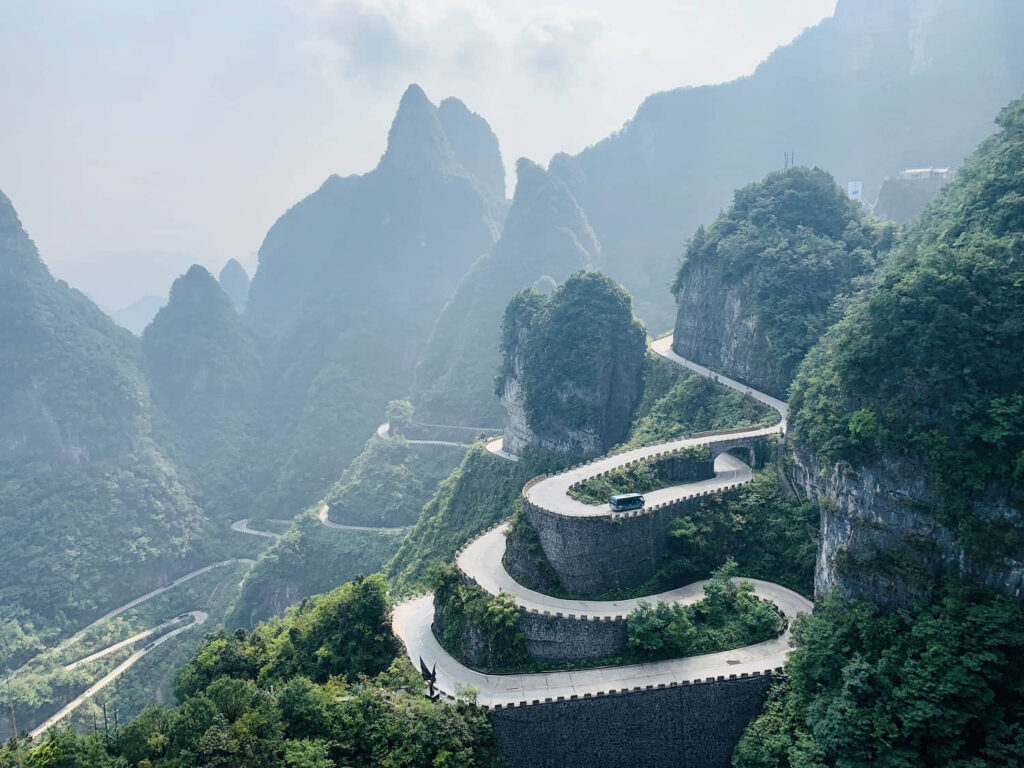
Diversity of Landscapes
Imagine driving through the misty peaks of the Zhangjiajie National Forest Park, the inspiration for the floating mountains in the movie “Avatar”, or cruising alongside the ancient Great Wall as it snakes over the hills in the distance. China’s geography is as diverse as its culture, with each province boasting its own unique scenery. From the tropical beaches of Hainan to the rugged, snow-capped mountains of Tibet, a road trip here offers a kaleidoscope of vistas.
Cultural Richness
China’s history stretches back thousands of years, and a road trip is like traveling through time. You’ll pass through cities where emperors once ruled, visit temples that have been places of worship for centuries, and see landscapes that have inspired poets and painters. The cultural tapestry of China is rich and intricate, with each region offering its own traditions, cuisine, and dialects.
Modern Infrastructure
With one of the fastest-growing networks of highways in the world, China is becoming increasingly road-trip friendly. The roads are generally in good condition, and signage in both Chinese and English is becoming more common, making navigation easier for international travelers.
The Road Less Traveled
While many tourists flock to the well-known attractions in China, taking a road trip allows you to explore the hidden gems that are off the beaten path. You can discover small villages, secluded temples, and stunning natural beauty that you would miss if you were traveling by train or plane.
A Culinary Journey
A road trip in China is also a feast for the taste buds. Each region has its own specialty dishes that you won’t find anywhere else. From the spicy hotpots of Sichuan to the Muslim-influenced cuisine of Xinjiang, your road trip can be a journey through the flavors of China.
Testimonials from Fellow Travelers
Don’t just take our word for it. Many who have ventured on a road trip in China speak of the freedom it offers, the unexpected discoveries, and the joy of interacting with locals. It’s an experience that can be as rewarding as it is challenging.
Choosing China for your road trip is about embracing the spirit of adventure and discovery. It’s about creating a story that’s uniquely yours, one that unfolds with each mile you travel. So, if you’re looking for a road trip that combines natural beauty, cultural immersion, and the thrill of exploration, China awaits with open roads and endless possibilities.
Preparing for Your Chinese Road Trip Adventure
Embarking on a road trip in China is akin to setting out on a grand voyage of discovery. It’s an adventure that demands preparation, foresight, and a dash of courage. Here’s how you can gear up for this epic journey, ensuring that your trip is not just memorable, but also smooth sailing.

Documentation and Permits: Navigating the Paper Trail
Before you can hit the road, there’s a bit of paperwork to sort out. International travelers need to be particularly mindful of the necessary documentation to avoid any hiccups.
- Visas: Ensure your visa is in order. China offers different types of visas, so make sure you apply for one that covers the duration and nature of your trip.
- International Driving Permit (IDP): China does not recognize IDPs, so you’ll need to apply for a temporary Chinese driving license. This usually requires a physical examination and a translated and notarized copy of your national driver’s license.
- Travel Insurance: Opt for comprehensive travel insurance that covers medical expenses, vehicle damage, and any unexpected incidents.
Vehicle Considerations: Choosing Your Steed
The vehicle you choose is your companion on this journey, so it’s crucial to pick one that’s up to the task.
- Renting a Vehicle: There are several rental agencies in China, but make sure they’re licensed to serve foreign drivers. Choose a vehicle that suits the terrain you plan to tackle—SUVs for rough landscapes and smaller cars for city touring.
- Bringing Your Own Vehicle: If you’re bringing your own vehicle, you’ll need a temporary import permit and vehicle registration. Be prepared for a thorough inspection at the border.
Packing Essentials: What to Bring Along
Packing for a road trip in China is an art. You want to be prepared for everything without lugging around your entire household. Here’s a checklist to help you pack smart:
- Navigation Tools: Reliable GPS and physical maps of the areas you’ll be visiting.
- Communication Devices: A local SIM card for your phone for emergencies and to stay connected.
- Basic Mandarin Phrases Booklet: Handy for those moments when technology fails or in remote areas where English isn’t commonly spoken.
- First-Aid Kit: Stocked with essentials, considering that pharmacies may not always be accessible.
- Snacks and Water: Keep a supply of non-perishable snacks and bottled water for the road.
- Clothing for All Climates: China’s vastness means varied climates. Pack layers and be ready for anything from rain to shine.
- Essential Documents: Keep your documents, including passport, visa, and driving license, secure and accessible.
Understanding Chinese Road Culture: Etiquette and Customs
The road culture in China can be quite different from what you’re used to. Here are a few tips to keep you in good stead:
- Honking: It’s more common in China than in many other countries and is often used as a signal to other drivers.
- Driving Etiquette: Be patient and stay alert. Traffic can be unpredictable, and local driving styles may take some getting used to.
- Toll Roads: Many of China’s highways are toll roads. Keep cash handy, as not all toll booths accept cards.
Legalities and Safety: Staying on the Right Side of the Law
- Speed Limits: Adhere to speed limits, which can vary widely from one place to another.
- Alcohol Consumption: China has strict laws against drinking and driving. The legal limit is lower than in many Western countries, so it’s best to abstain if you’re driving.
Preparing for a road trip in China is about balancing the excitement of spontaneity with the security of planning. With your documents sorted, your vehicle chosen, and your bags packed with essentials, you’re almost ready to start the engine. But remember, the most important thing to bring along is your sense of adventure—it’s the fuel that will power your journey across this incredible land.
Step-by-Step Guide to China’s Most Scenic Routes
China is a land of immense beauty and diverse landscapes, making it an ideal destination for a road trip. From the ancient Silk Road to the modern highways that traverse the country, there are plenty of scenic routes to explore. In this step-by-step guide, we will take you through some of China’s most breathtaking road trips, ensuring that you don’t miss out on any of the incredible sights and experiences along the way.
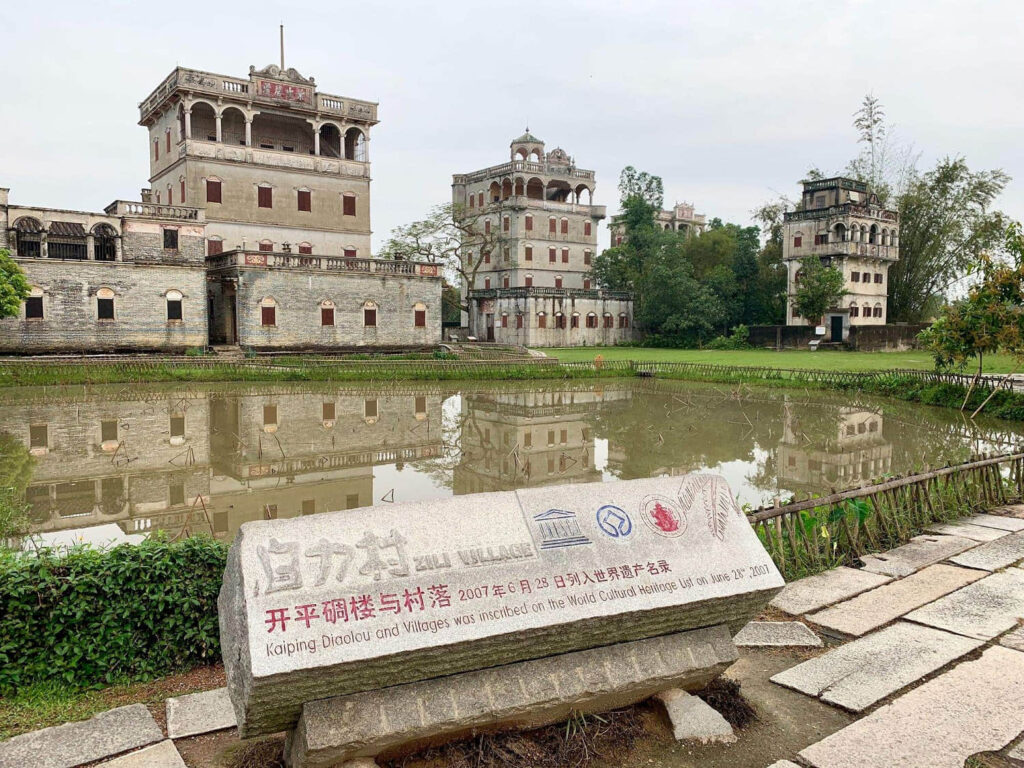
The Silk Road Trail
The Silk Road Trail is not just a route; it’s a journey through history. As you drive along this ancient network of trade routes, you’re tracing the paths that merchants, pilgrims, monks, soldiers, and nomads traveled over 2,000 years ago. It’s a road that connected the East and West, bringing together diverse cultures and contributing to the exchange of goods, ideas, religion, and even technology.
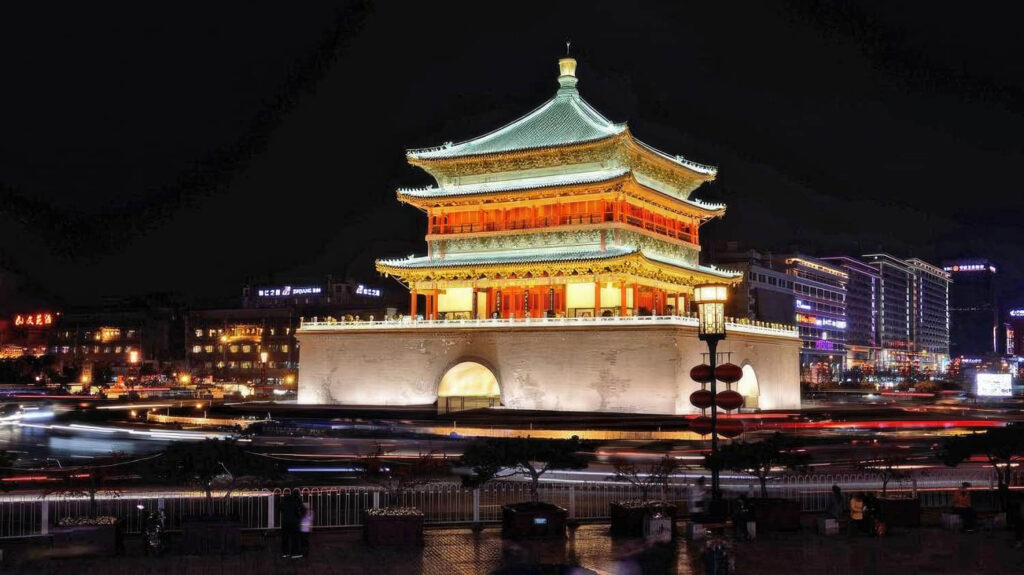
Historical Significance
The Silk Road was named for the lucrative silk trade that took place during the Han Dynasty and became a cornerstone in the development of the civilizations it touched. It played a significant role in shaping the modern world, and driving this route gives you a tangible connection to the past.
Key Attractions
- Xi’an: Start your journey where the Silk Road begins, in the ancient city of Xi’an, home to the famous Terracotta Army.
- Dunhuang: Marvel at the Mogao Caves, a complex of 492 grottoes adorned with Buddhist art.
- Turpan: Explore the ruins of the ancient city of Jiaohe and the Karez irrigation system, a technological wonder of its time.
- Kashgar: End your journey in the city of Kashgar, once a key trading post, and experience the vibrant Sunday Market.
Driving the Silk Road Trail
The route stretches over 4,000 miles, but you don’t have to cover it all. Even a section of the Silk Road can offer a fulfilling experience. The roads are a mix of modern highways and rugged trails, so be prepared for varying conditions. Along the way, you’ll encounter landscapes that range from vast deserts to soaring mountains.
Cultural Immersion
Embrace the local cultures as you travel. The Silk Road is a melting pot of ethnic groups, languages, and traditions. Take the time to stop in the small towns and villages, interact with the locals, and sample regional cuisines.
Travel Tips
- Plan your stops and accommodations in advance, as some areas along the route are quite remote.
- Make sure your vehicle is well-maintained and equipped for long distances and the occasional rough terrain.
- Carry enough cash, as ATMs and card services may be scarce outside of the larger cities.
Driving the Silk Road Trail in China is an epic adventure that offers a unique blend of history, culture, and natural beauty. It’s a road trip that challenges and rewards, leaving you with stories and memories that last a lifetime.
The Coastal Cruise from Shanghai to Guangzhou
Embarking on a coastal cruise by car from the bustling metropolis of Shanghai to the vibrant city of Guangzhou is an experience that offers a different perspective of China’s vast and varied landscape. This journey is not just about the destination but the myriad of experiences along the coastline of the South China Sea.
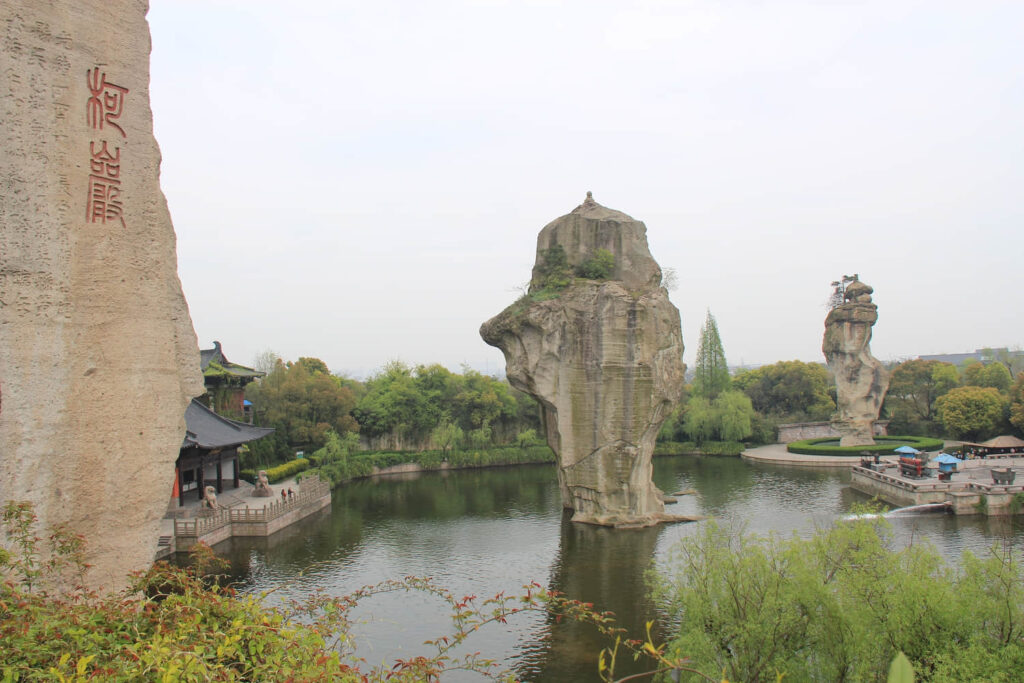
Urban Skylines and Seaside Serenity
Starting in Shanghai, you’re greeted by an iconic skyline that represents China’s rapid modernization. As you leave the city, the urban landscape gives way to the tranquil beauty of the coast. The drive to Guangzhou is filled with contrasts, from modern urban centers to serene beaches and small fishing villages where life moves at a slower pace.
Key Attractions
- Hangzhou: Known for its picturesque West Lake, Hangzhou combines natural beauty with cultural heritage.
- Xiamen: This coastal city is famous for its colonial architecture and the nearby UNESCO World Heritage Site of Gulangyu Island.
- Shantou: A lesser-known stop that offers a glimpse into China’s maritime history and unique Teochew culture.
- Hong Kong: Although not directly on the path to Guangzhou, a detour to this world city can offer a blend of East and West like no other.
- Guangzhou: End your journey in a city known for its Cantonese cuisine and as a historical trading port.
Driving the Coast
The drive from Shanghai to Guangzhou stretches approximately 1,200 miles, hugging the coastline and offering drivers stunning ocean views. The roads are well-maintained, making for a comfortable drive. However, be prepared for traffic as you approach and depart the larger cities.
Culinary Delights
One of the highlights of this coastal drive is the fresh seafood. Each region along the route has its own seafood specialties, prepared in ways that reflect local tastes and traditions. From the crab of Yangcheng Lake to the oysters of Shantou, your taste buds are in for a treat.
Travel Tips
- Take your time and plan for stops along the way to fully appreciate the changing landscapes and local culture.
- Be aware of the weather, especially during typhoon season, which can affect coastal areas.
- Keep some basic phrases handy or a translation app to help with ordering food and asking for directions.
The coastal cruise from Shanghai to Guangzhou is more than just a road trip—it’s a journey through China’s evolving identity, where the past and future coexist. It’s an opportunity to witness the diversity of China’s coastal cities and the beauty of its shores.
The Himalayan Highway
The Himalayan Highway is a route that promises an adventure of epic proportions, taking you through some of the most breathtaking and challenging terrains on the planet. This journey is not just about the destinations but also about the awe-inspiring experiences as you traverse the roof of the world.
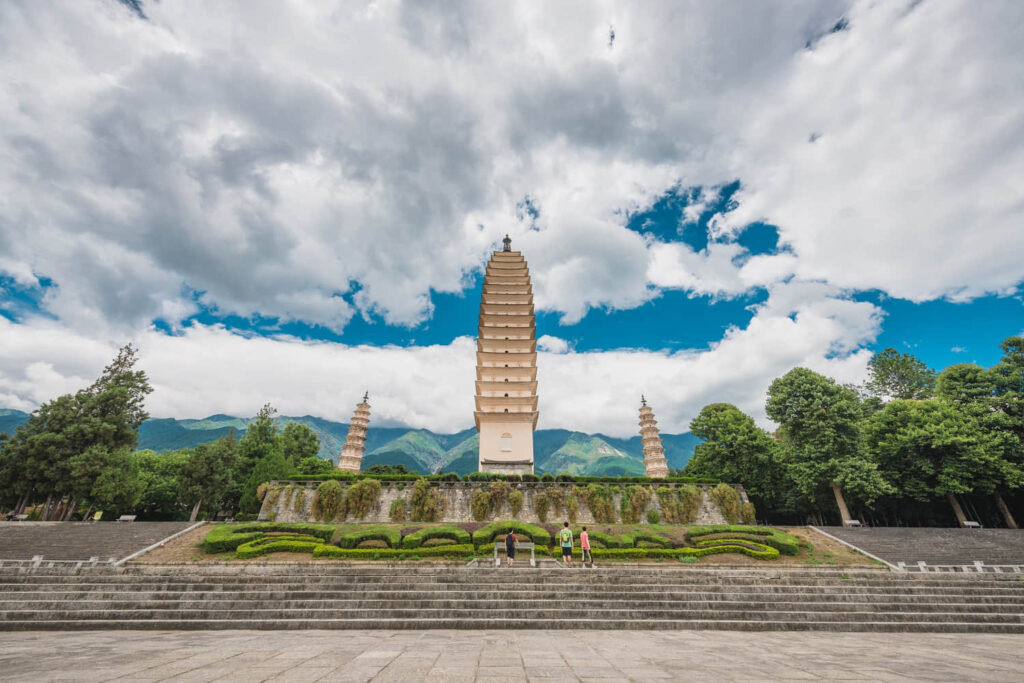
Elevation and Elation
As you ascend the winding roads of the Himalayan Highway, you’ll feel the elevation as much in your spirit as in your ears. The air grows thinner, the landscapes more dramatic, and the connection to nature stronger. This is a place where the majesty of the earth meets the sky, and every mile traveled feels like a step closer to heaven.
Key Attractions
- Lhasa: The spiritual heart of Tibet, Lhasa is home to the iconic Potala Palace and Jokhang Temple, where the air is thick with the scent of incense and the murmur of mantras.
- Shigatse: The traditional seat of the Panchen Lama, with its impressive Tashilhunpo Monastery.
- Mount Everest Base Camp: For many, this is the pinnacle of the journey, offering views of the world’s highest peak that are simply unmatched.
- Yunnan: A province known for its diverse ethnic culture and stunning natural beauty, including the Tiger Leaping Gorge.
Driving the Himalayan Highway
The roads here can be as challenging as they are beautiful. High altitudes and unpredictable weather mean that preparation is key. The route is often closed during winter months due to heavy snowfall, so timing your trip is crucial.
Cultural Experiences
The Himalayan region is not just geographically diverse but also culturally rich. You’ll encounter a mosaic of ethnic groups, each with their own traditions, languages, and customs. Take the opportunity to engage with the local communities and learn about their way of life, which has remained largely unchanged for centuries.
Travel Tips
- Acclimatize properly to avoid altitude sickness. Plan for gradual ascents and rest days.
- Ensure your vehicle is equipped for rough terrain and carry spare fuel, as gas stations are few and far between.
- Respect local customs and religious sentiments. Always ask for permission before taking photographs of people or religious sites.
The Himalayan Highway is more than a road—it’s a passage through diverse cultures and some of the earth’s most awe-inspiring landscapes. It’s a journey that challenges the body, stimulates the mind, and enriches the soul.
The Karakoram Pass
The Karakoram Pass, part of the storied Karakoram Highway, is often referred to as the ‘Eighth Wonder of the World’ due to the sheer marvel of its construction. This route is not just a passage between borders; it’s a journey through some of the most majestic and untamed landscapes on earth.
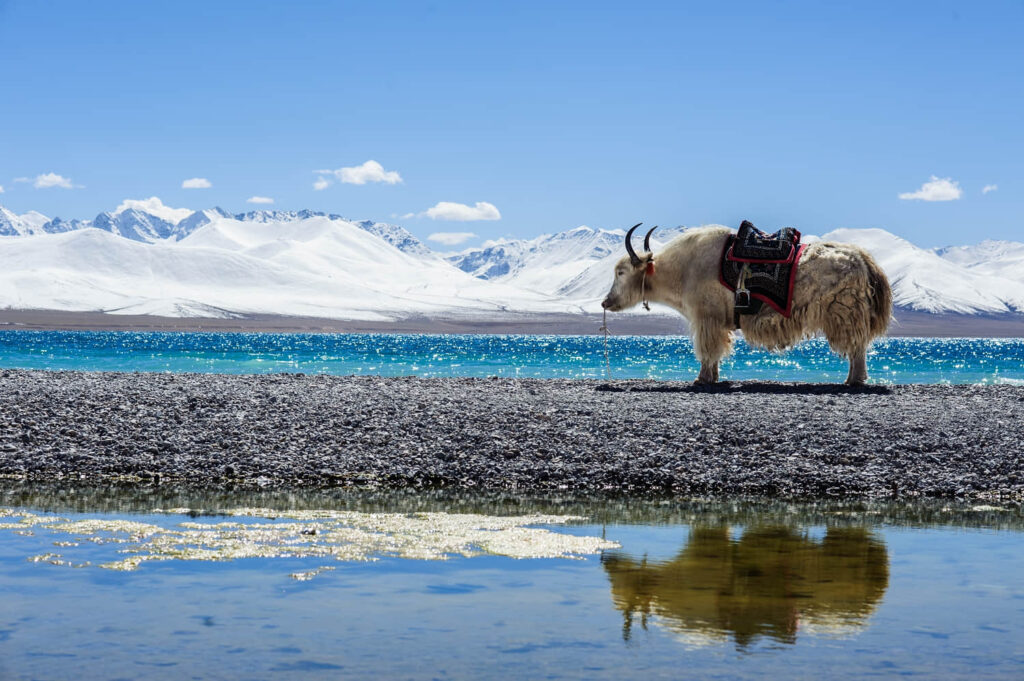
Engineering Marvels and Natural Splendor
As you navigate the Karakoram Highway, you’re following a path that connects China with Pakistan, traversing a region where three great mountain ranges—the Himalayas, the Karakoram, and the Hindu Kush—converge. The road itself is a testament to human tenacity, hewn from the rugged mountainside.
Key Attractions
- Kashgar: Before you tackle the pass, explore Kashgar, a city that encapsulates the region’s rich cultural tapestry.
- Tashkurgan: The last Chinese town before the Pakistan border, it offers a blend of Chinese and Tajik cultures.
- Pamir Plateau: Often described as the ‘roof of the world’, the plateau offers stunning vistas and a chance to witness nomadic life.
- Karakoram Wildlife: The region is home to rare species like the snow leopard and Marco Polo sheep. Keep your camera ready, but also maintain a safe and respectful distance.
Driving the Karakoram Pass
The road can be treacherous, with sharp turns, steep drops, and the threat of landslides. It’s a route that demands a robust vehicle and an experienced, confident driver. The best time to travel is between May and October when the snow has melted, and the road conditions are more manageable.
Cultural Insights
The Karakoram is more than just a highway; it’s a cultural corridor. The people who live along this route are as resilient as the landscape, with traditions that have adapted to the harsh environment. Engage with the local communities and you’ll uncover stories of survival and adaptation that are as compelling as the scenery.
Travel Tips
- Check travel advisories and road conditions before your trip, as the political situation can affect accessibility.
- Carry enough supplies, including food, water, and warm clothing, as amenities are sparse along the highway.
- Be prepared for altitude sickness with appropriate medication and by planning for gradual acclimatization.
Traveling the Karakoram Pass is an undertaking that offers rich rewards for those who seek the road less traveled. It’s a journey that will leave you with a profound sense of awe for both nature’s grandeur and human determination.
The Tea Horse Road
The Tea Horse Road, an ancient trade route once used for the exchange of Tibetan horses and Chinese tea, is a path steeped in history and natural beauty. This route is less traveled but no less significant, offering a journey back in time through the heart of China’s tea country.
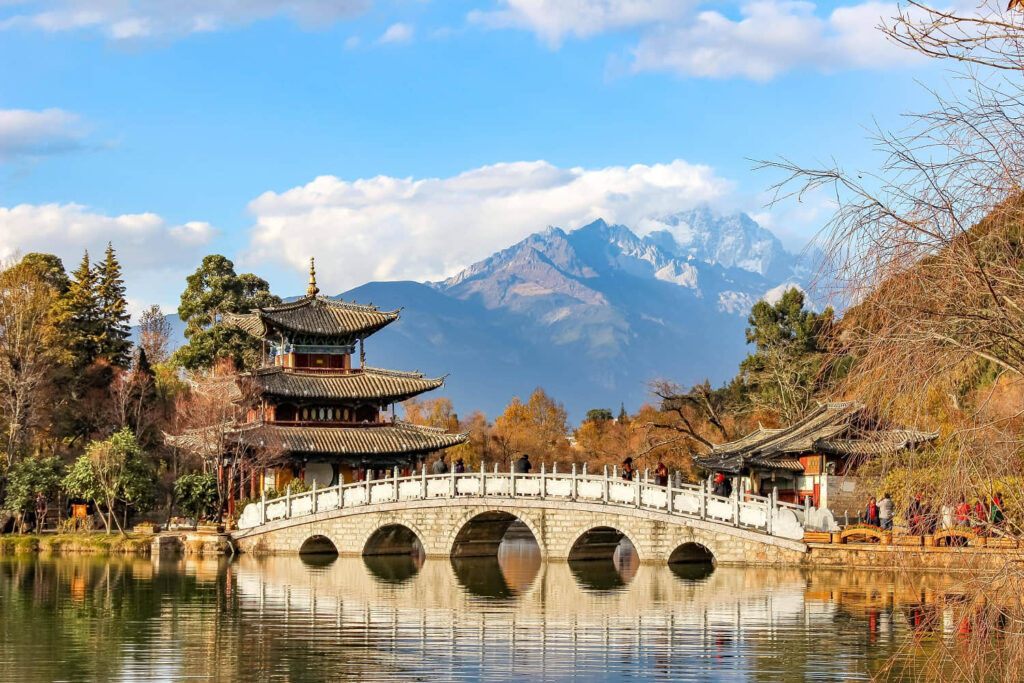
Ancient Trade Routes and Cultural Exchange
Traveling the Tea Horse Road is like unwinding the scrolls of history. As you meander through the lush landscapes of Yunnan Province, you’re tracing the hoofprints of muleteers and the footprints of tea traders who for centuries connected the remote Himalayan highlands with the fertile tea plantations.
Key Attractions
- Pu’er: Known for the eponymous Pu’er tea, this city is a great starting point to understand the historical significance of the tea trade.
- Dali: With its preserved ancient town and stunning views of the Cangshan Mountains and Erhai Lake, Dali is a cultural gem.
- Lijiang: A UNESCO World Heritage site, Lijiang’s old town is a maze of traditional architecture and cobbled streets.
- Shangri-La: The gateway to the Tibetan region offers a mix of Tibetan and Han cultures and is a perfect spot to experience the spiritual and natural wonders of the area.
Driving the Tea Horse Road
The road can be winding and narrow, passing through mountainous terrain and offering spectacular views. It’s a drive that requires caution and patience but rewards travelers with scenes of terraced tea fields and ancient villages.
Local Cuisines and Customs
The Tea Horse Road will take you through regions where the local cuisine is as diverse as the scenery. Sampling local tea is a must, as is trying the various dishes that have been influenced by the trade route’s history. The hospitality of the local people is warm, and their traditions are rich, offering a glimpse into a way of life that has endured for generations.
Travel Tips
- Plan your route to include time for tea tastings and cultural experiences.
- Be aware of the altitude in some areas, which can affect travelers not accustomed to higher elevations.
- Respect the local environment and cultural sites, many of which are sacred to the indigenous people.
The Tea Horse Road is a journey that offers a blend of natural beauty, history, and cultural immersion. It’s a road that tells a story of commerce, community, and the timeless value of a good cup of tea.
The Yangtze River Run
The Yangtze River Run offers a unique road trip experience that parallels the longest river in Asia. This journey is not just about the destinations along the way but also about the cultural and historical revelations that the mighty Yangtze has witnessed over millennia.
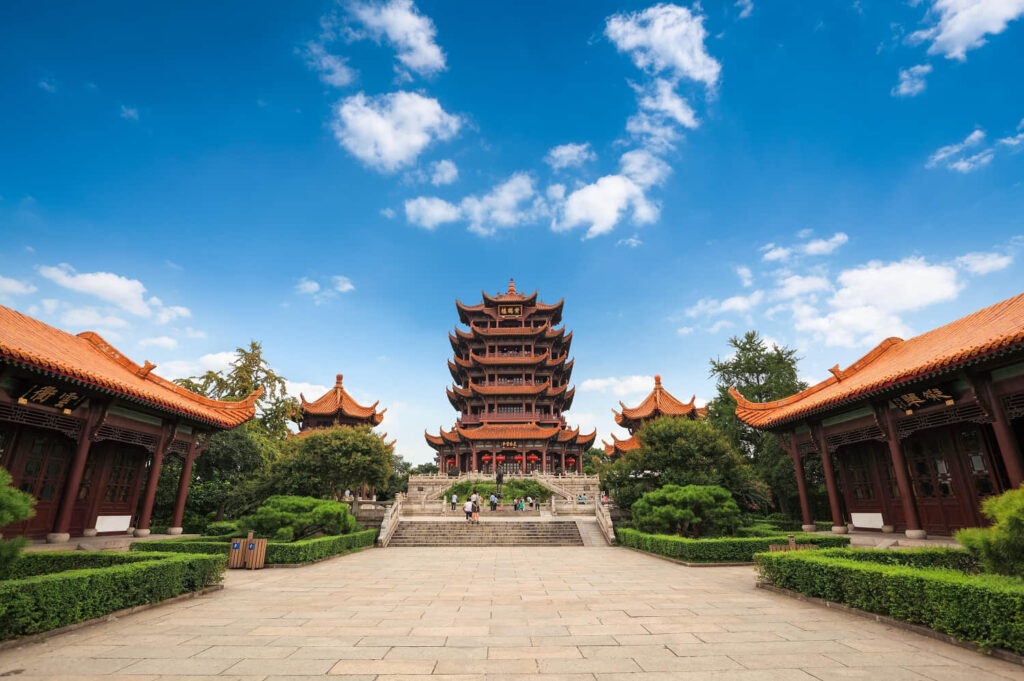
Following the Flow of History
Driving along the Yangtze River is like navigating through the pages of China’s history. The river has been a lifeline for commerce, culture, and civilization since ancient times. As you travel from the river’s dramatic gorges in the west to its delta in the east, you’re following a route that has shaped the destiny of China.
Key Attractions
- Chongqing: Known as the ‘Mountain City’, Chongqing is a bustling metropolis that offers spicy Sichuan cuisine and a starting point for river cruises.
- Three Gorges Dam: A marvel of modern engineering, this dam is a sight to behold and represents China’s advances in renewable energy.
- Wuhan: A key city in China’s history, Wuhan is rich with cultural sites, including the Hubei Provincial Museum.
- Nanjing: Once the capital of several Chinese dynasties, Nanjing is home to historical treasures like the Sun Yat-sen Mausoleum.
- Shanghai: The journey concludes in Shanghai, where the Yangtze meets the East China Sea, symbolizing the blend of ancient tradition and modern innovation.
Driving the Yangtze River Run
The route along the Yangtze offers well-maintained roads and is dotted with cities and towns, providing ample opportunities for rest and exploration. The drive allows you to witness the transformation of the landscape as you move from the river’s upper reaches to its expansive lower plains.
Cultural Insights
The Yangtze River basin is home to a diverse array of cultures and communities. Each region along the river has its own unique traditions, dialects, and culinary specialties. Engaging with the locals and participating in traditional activities can enrich your travel experience.
Travel Tips
- Plan your journey to coincide with local festivals for a more immersive experience.
- Be prepared for traffic in urban areas, especially as you approach major cities like Wuhan and Shanghai.
- Take time to explore the natural beauty along the river, including parks and reserves.
The Yangtze River Run is more than a road trip—it’s a voyage alongside a living monument to China’s past, present, and future. It offers travelers a chance to experience the pulse of China as it flows through the heart of the country.
Navigating Challenges on the Road
Embarking on a road trip in China is an exhilarating adventure, but it’s not without its challenges. From language barriers to navigation, there are hurdles that can test the mettle of even the most seasoned travelers. However, with a little preparation and some insider tips, you can navigate these challenges with ease and make your journey a story worth telling.

Language Barriers: Bridging the Communication Gap
One of the first obstacles you may encounter is the language barrier. Mandarin is the lingua franca, and outside major cities, English is not widely spoken. Here’s how to ensure language differences don’t put a damper on your adventure:
- Learn Basic Mandarin: Familiarize yourself with key phrases, such as greetings, directions, and numbers. Even a basic grasp of Mandarin can go a long way.
- Translation Apps: Make technology your ally. Apps like Google Translate can be invaluable for real-time translation and understanding road signs.
- Body Language and Gestures: Sometimes, the universal language of gestures can help you communicate more effectively than words.
Navigation: Finding Your Way
China’s vastness can make navigation daunting. GPS can be unreliable in remote areas, and maps may not always be up-to-date. Here’s how to stay on course:
- Offline Maps: Download offline maps of the areas you’ll be visiting. Apps like Maps.me or the offline mode in Google Maps can be lifesavers.
- Physical Maps: Keep a paper map as a backup. It’s old-school but can be incredibly useful when technology fails.
- Local Knowledge: Don’t hesitate to ask locals for directions. A simple point on a map from a local can sometimes be more accurate than a GPS.
Road Conditions: Expect the Unexpected
The quality of roads in China can vary dramatically from smooth highways to rugged mountain paths. Here’s how to tackle varying road conditions:
- Vehicle Preparedness: Ensure your vehicle is equipped for the terrain you’ll encounter. Regular maintenance checks are a must.
- Drive Defensively: Be prepared for unexpected obstacles, from erratic drivers to livestock crossing the road.
- Weather Awareness: Check weather forecasts regularly. Conditions can change rapidly, especially in mountainous regions.
Cultural Etiquette: When in Rome, Do as the Romans Do
Understanding and respecting local customs is crucial. Here’s how to ensure your interactions are respectful and pleasant:
- Cultural Research: Before you go, read up on the cultural norms and etiquette of the regions you’ll be visiting.
- Observation: Watch how locals interact with each other and follow their lead.
- Politeness: A smile and a polite demeanor can help smooth over many a social wrinkle.
Emergencies: Being Prepared
Despite the best planning, emergencies can happen. Here’s how to be prepared:
- Emergency Contacts: Keep a list of emergency contacts, including the local equivalent of 911 and your embassy’s number.
- First-Aid Kit: Keep a well-stocked first-aid kit in your vehicle at all times.
- Local Help: In case of an emergency, don’t hesitate to reach out to locals. Community is strong in China, and help is often at hand.
Navigating the challenges of a road trip in China is part of the adventure. It’s about embracing the unexpected and turning it into an enriching experience. With each challenge overcome, you’ll find your journey more rewarding, and the stories you bring back will be all the richer for it.
Cultural Etiquette and Tips
When traveling through China, understanding and respecting local customs is not just a courtesy—it’s an integral part of the journey. Cultural etiquette can vary greatly from region to region, but there are some universal tips that can help you navigate social situations and connect more deeply with the locals.
Respect Traditions
China’s cultural tapestry is woven with traditions that have been passed down through generations. Whether you’re visiting a temple or attending a local festival, show respect for these traditions. Dress modestly in religious sites, and always ask permission before taking photos, especially of people.
Mind Your Manners
Chinese social interactions may have different norms than what you’re used to. Simple gestures like a slight bow or nod when greeting someone can be appreciated. Avoid using your phone at the dinner table, and be sure to acknowledge the oldest or most senior person in the group first as a sign of respect.
Gift Giving
If you’re invited into a local’s home, it’s customary to bring a small gift as a token of appreciation. Avoid giving anything sharp, like knives or scissors, as they can symbolize the severing of a relationship. Similarly, clocks are associated with death and should be avoided as gifts.
Dining Etiquette
Meals are a central part of Chinese culture and can be a great way to experience local hospitality. Remember to wait for the host to invite you to start eating. It’s polite to try a bit of everything that’s offered and to leave a little food on your plate to indicate you’ve had enough.
Face: Understanding the Concept
The concept of ‘face’ (mianzi) is deeply ingrained in Chinese culture. It refers to a person’s reputation and dignity. Always aim to give ‘face’ to others through polite behavior and avoid causing someone to ‘lose face’ through public criticism or refusal of a gesture.
Language
Even if you only know a few words, making an effort to speak Mandarin can go a long way in showing respect. Phrases like “nǐ hǎo” (hello) and “xièxiè” (thank you) are easy to learn and can help break the ice.
Be Patient and Open
Cultural misunderstandings can happen, but patience and an open mind go a long way. If you’re unsure about something, it’s perfectly okay to observe others or ask for help.
By following these cultural etiquette tips, you’ll not only enrich your travel experience but also forge genuine connections with the people you meet along the way. Remember, it’s these interactions that often become the most cherished memories of your travels.
Conclusion
In closing, a road trip through China is more than a passage through places; it’s an exploration of experiences. Each turn on the road is a new chapter, each city a different character, and each mile a memory to cherish. As you journey, embrace the moments, the landscapes, and the people. The end of one adventure is simply the beginning of another, with the road always extending ahead, full of possibilities. Safe travels.
